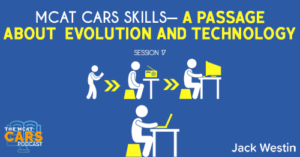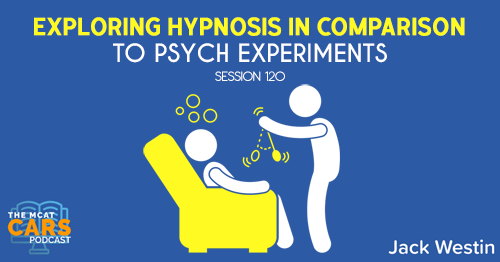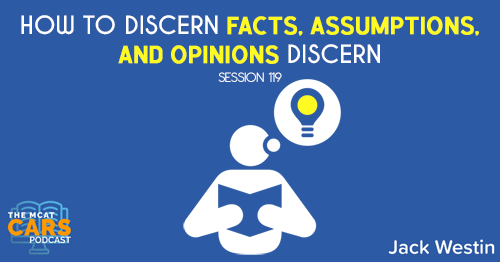Apple Podcasts | Google Podcasts

Session 17
The author of this article today draws parallels between two dissimilar things: bacteria and technology. Follow along to find out how the author compared these two.
Link to article: https://www.wired.com/story/ideas-joi-ito-great-digitization-event/
“Somewhere 2 and 3 billion years ago, what scientists call the Great Oxidation Event, or GOE, took place, causing the mass extinction of anaerobic bacteria, the dominant life form at the time. A new type of bacteria, cyanobacteria, had emerged, and it had the photosynthetic ability to produce glucose and oxygen out of carbon dioxide and water using the power of the sun. Oxygen was toxic to many anaerobic cousins, and most of them died off. In addition to being a massive extinction event, the oxygenation of the planet kicked off the evolution of multicellular organisms (620 to 550 million years ago), the Cambrian explosion of new species (540 million years ago), and an ice age that triggered the end of the dinosaurs and many cold-blooded species, leading to the emergence of the mammals as the apex group (66 million years ago) and eventually resulting in the appearance of Homo sapiens, with all of their social sophistication and complexity (315,000 years ago).
I’ve been thinking about the GOE, the Cambrian Explosion, and the emergence of the mammals a lot lately, because I’m pretty sure we’re in the midst of a similarly disruptive and pivotal moment in history that I’m calling the Great Digitization Event, or GDE. And right now we’re in that period where the oxygen, or in this case the internet as used today, is rapidly and indifferently killing off many systems while allowing new types of organizations to emerge.
As WIRED celebrates its 25th anniversary, the Whole Earth Catalog its 50th anniversary, and the Bauhaus its 100th anniversary, we’re in a modern Cambrian era, sorting through an explosion of technologies enabled by the internet that are the equivalent of the stunning evolutionary diversity that emerged some 500 million years ago. Just as in the Great Oxidation Event, in which early organisms that created the conditions for the explosion of diversity had to die out or find a new home in the mud on the ocean floor, the early cohort that set off the digital explosion is giving way to a new, more robust form of life. As Fred Turner describes in From Counterculture to Cyberculture, we can trace all of this back to the hippies in the 1960s and 1970s in San Francisco. They were the evolutionary precursor to the advanced life forms observable in the aftermath at Stoneman Douglas High School. Let me give you a first-hand account of how the hippies set off the Great Digitization Event.
FROM THE OUTSET, members of that movement embraced nascent technological change. Stewart Brand, one of the Merry Pranksters, began publishing the Whole Earth Catalog in 1968, which spawned a collection of other publications that promoted a vision of society that was ecologically sound and socially just. The Whole Earth Catalog gave birth to one of the first online communities, the Whole Earth ‘Lectronic Link, or WELL, in 1985.
Around that time, R.U. Sirius and Mark Frost started the magazine High Frontiers, which was later relaunched with Queen Mu and others as Mondo 2000. The magazine helped legitimize the burgeoning cyberpunk movement, which imbued the growing community of personal computer users and participants in online communities with an ‘80s version of hippie sensibilities and values. A new wave of science fiction, represented by William Gibson’s Neuromancer, added the punk rock dystopian edge.”
[02:54] Paragraph 1, Sentence 1:
Somewhere 2 and 3 billion years ago, what scientists call the Great Oxidation Event, or GOE, took place, causing the mass extinction of anaerobic bacteria, the dominant life form at the time.
Jack says:
The author paints a picture of the oxidation event that took place billions of years ago. Let’s move on to the next to learn more about it.
[03:48] Paragraph 1, Sentence 2:
A new type of bacteria, cyanobacteria, had emerged, and it had the photosynthetic ability to produce glucose and oxygen out of carbon dioxide and water using the power of the sun.
Jack says:
There’s this new bacteria and what it’s able to do with the sun and that it actually makes oxygen.
[04:16] Paragraph 1, Sentence 3:
Oxygen was toxic to many anaerobic cousins, and most of them died off.
Jack says:
It explains how oxygen was toxic to them, hence, why they died off.
[04:33] Paragraph 1, Sentence 4:
In addition to being a massive extinction event, the oxygenation of the planet kicked off the evolution of multicellular organisms (620 to 550 million years ago), the Cambrian explosion of new species (540 million years ago), and an ice age that triggered the end of the dinosaurs and many cold-blooded species, leading to the emergence of the mammals as the apex group (66 million years ago) and eventually resulting in the appearance of Homo sapiens, with all of their social sophistication and complexity (315,000 years ago).
Jack says:
The author gives this history lesson of what happened after the oxygenation event. They basically explain the history of the earth in one paragraph.
[05:57] Paragraph 2, Sentence 1:
I’ve been thinking about the GOE, the Cambrian Explosion, and the emergence of the mammals a lot lately, because I’m pretty sure we’re in the midst of a similarly disruptive and pivotal moment in history that I’m calling the Great Digitization Event, or GDE.
Jack says:
The author says they’re thinking about this stuff lately since we’re going through this similar event. They could be referring to the evolution of digital stuff.
[07:01] Paragraph 2, Sentence 2:
And right now we’re in that period where the oxygen, or in this case the internet as used today, is rapidly and indifferently killing off many systems while allowing new types of organizations to emerge.
Jack says:
The internet is killing off other things we don’t need anymore because of the internet. So it’s like an analogy to the dinosaurs going away.
[07:39] Paragraph 3, Sentence 1:
As WIRED celebrates its 25th anniversary, the Whole Earth Catalog its 50th anniversary, and the Bauhaus its 100th anniversary, we’re in a modern Cambrian era, sorting through an explosion of technologies enabled by the internet that are the equivalent of the stunning evolutionary diversity that emerged some 500 million years ago.
Jack says:
This is giving us more examples of why this person thinks we’re going through another event and comparing it to the modern Cambrian era of all these new technologies. Just realize here that the internet is doing some kind of change.
[08:31] Paragraph 3, Sentence 2:
Just as in the Great Oxidation Event, in which early organisms that created the conditions for the explosion of diversity had to die out or find a new home in the mud on the ocean floor, the early cohort that set off the digital explosion is giving way to a new, more robust form of life.
Jack says:
Again, more comparisons of what’s happening before vs now — just in a different way.
[08:57] Paragraph 3, Sentence 3:
As Fred Turner describes in From Counterculture to Cyberculture, we can trace all of this back to the hippies in the 1960s and 1970s in San Francisco.
Jack says:
We’re given a name here, Fred Turner, who may have written a book.
[09:25] Paragraph 3, Sentence 4:
They were the evolutionary precursor to the advanced life forms observable in the aftermath at Stoneman Douglas High School.
Jack says:
“They” could refer to the hippies. Just a trivia: Stoneman Douglas High School is a high school in Florida that had a shooting event in 2018. But you don’t have to go this far. You need to know a lot of information about the school. But it’s really odd for the author to bring this up. Try not to bring any bias here.
[10:40] Paragraph 3, Sentence 5:
Let me give you a first-hand account of how the hippies set off the Great Digitization Event.
Jack says:
The big picture after reading this paragraph is that the hippie culture is potentially leading to the internet. We evolved from hippies to these high school kids.
[11:28] Paragraph 4, Sentence 1:
FROM THE OUTSET, members of that movement embraced nascent technological change.
Jack says:
The hippie movement brought new change. But even if you didn’t know what “nascent” meant, you’d still know it because you know there’s technological change.
[12:02] Paragraph 4, Sentence 2:
Stewart Brand, one of the Merry Pranksters, began publishing the Whole Earth Catalog in 1968, which spawned a collection of other publications that promoted a vision of society that was ecologically sound and socially just.
Jack says:
The author talks about a new name, who is a definition of a hippie. It sounds like the “ecologically sound and social just” is something that led to this internet. But they haven’t said that yet.
[13:18] Paragraph 4, Sentence 3:
The Whole Earth Catalog gave birth to one of the first online communities, the Whole Earth ‘Lectronic Link, or WELL, in 1985.
Jack says:
They’re trying to say that these hippies did some kind of technological change. It may have something to do with socially just or sound. But essentially, it led to this internet online community.
[13:57] Paragraph 5, Sentence 1:
Around that time, R.U. Sirius and Mark Frost started the magazine High Frontiers, which was later relaunched with Queen Mu and others as Mondo 2000.
Jack says:
We’re given other new names which talk about another magazine. This is probably just a filler.
[14:33] Paragraph 5, Sentence 2:
The magazine helped legitimize the burgeoning cyberpunk movement, which imbued the growing community of personal computer users and participants in online communities with an ‘80s version of hippie sensibilities and values.
Jack says:
They’re tying together how the hippies and the digital movement tied in together and how that happened. This hippie online community sparked a movement in some ways and maybe got more people on the internet.
[15:11] Paragraph 5, Sentence 3:
A new wave of science fiction, represented by William Gibson’s Neuromancer, added the punk rock dystopian edge.”
Jack says:
The author is just talking about another name or example of the change showing a rock dystopian edge.
[15:38] What the Passage Means
The author started off the passage with this idea of how evolution occurs through change. And this change causes new organisms and new life forms to develop. Then they brought that as an analogy to today’s culture and what’s happening today with the digital scene. Then they give us the specifics. How it’s happening is through the hippies. Their idea is that the hippies helped change the way that we interact with society, in a way that we look at technology. We’re in this moment in digital evolution where old technology is dying to give way to new and better technology due to hippies.
Links:
SEARCH SITE
SEARCH SITE
LISTEN FOR FREE











